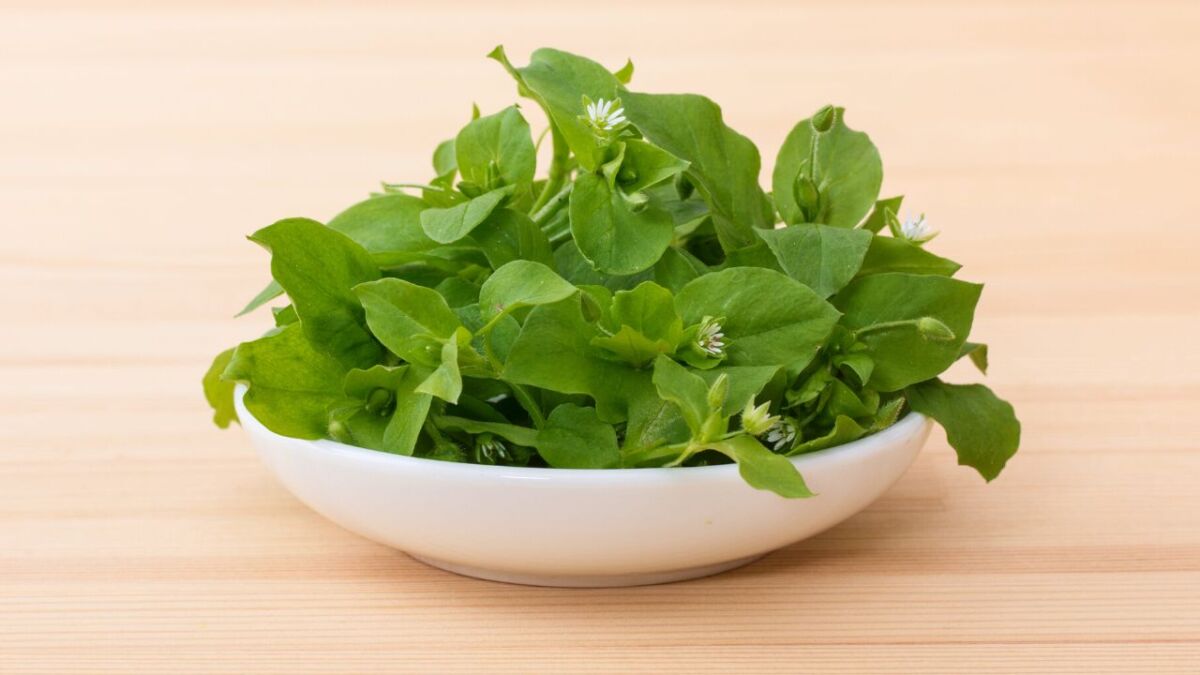
Wild and medicinal plant chickweed - nutritional value, usage, recipes, history, and more
👉 The key facts from this guide
- Chickweed is a plant rich in vitamins and minerals, which grows in spring and strengthens the body after winter.
- The plant contains vitamins C, B, A, K, folic acid, iron, manganese, zinc, copper, calcium, and magnesium.
- Chickweed can be used in the kitchen, for example in soups, salads, pesto, or smoothies.
- The plant has healing properties and can help with colds, skin irritations, bruises, and other ailments.
- Chickweed can easily be confused with other plants, so it is important to identify it correctly.
- The plant has a long history and is mentioned in legends and fairy tales.
One of my absolute favorite plants in early spring is the chickweed.
As soon as it reaches the end of April and stretches its tiny, star-shaped flowers towards the sun, spring has truly arrived.
I know of no other plant that I look forward to every year as much as this one.
The reason for this is quite simple. After a long and rather vitamin-deficient winter, it has everything it takes to get the body back on track.
The chickweed may be small, but it is virtually indestructible. It is relatively insensitive to cold, making it a true survivor.
It even emerges from under the snow if you push it aside in the right places.
And there are the right places in every park, every forest, and every meadow.
It is full of minerals and vitamins, and thus contributes to a circumstance that you would not expect from this inconspicuous plant.
Just 50 g of chickweed is enough to meet our daily vitamin C requirement.
It does not even have high demands on its growth location, as it only needs sun, soil, and water to live.
This little powerhouse is an invaluable gift that nature gives us every year, and such gifts should be treated with special attention.
What Makes Chickweed So Special
Now I've talked so much around the bush that it's time for some details.
Chickweed belongs to the carnation family and goes by the resonant Latin name Stella Media.
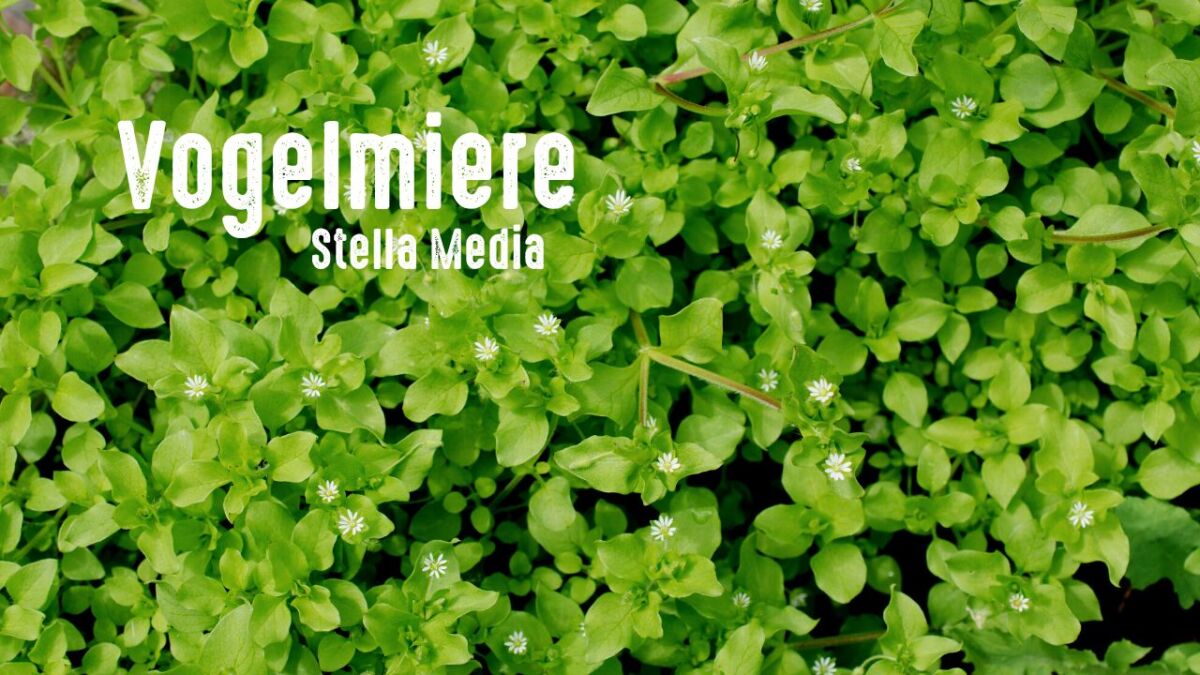
Thanks to its long but lying stems, it only grows to a height of 10 centimeters and can be found in bushy carpets along forest and roadside edges, in gardens, and on meadows.
Its flowers consist of pairs of tiny white petals that resemble small stars, which likely gave it its name.
The name "chickweed" is also no coincidence: birds love this herb and enjoy eating it.
Even exotic birds like budgies and parrots appreciate the vitamin-rich plant. It's also commonly used as a vitamin supplement for small rodents.
The high levels of calcium and silicon in the chickweed ensures strong, healthy beaks and shiny feathers.
What's good for animals is also beneficial for us humans
Comparing the nutrient content of the plant to that of lettuce, chickweed clearly comes out on top.
With twice as much calcium, three times more potassium and magnesium, and a whopping seven times as much iron, it outperforms lettuce by far.
The best part: chickweed doesn't need to be cultivated because it grows plentifully in the wild.
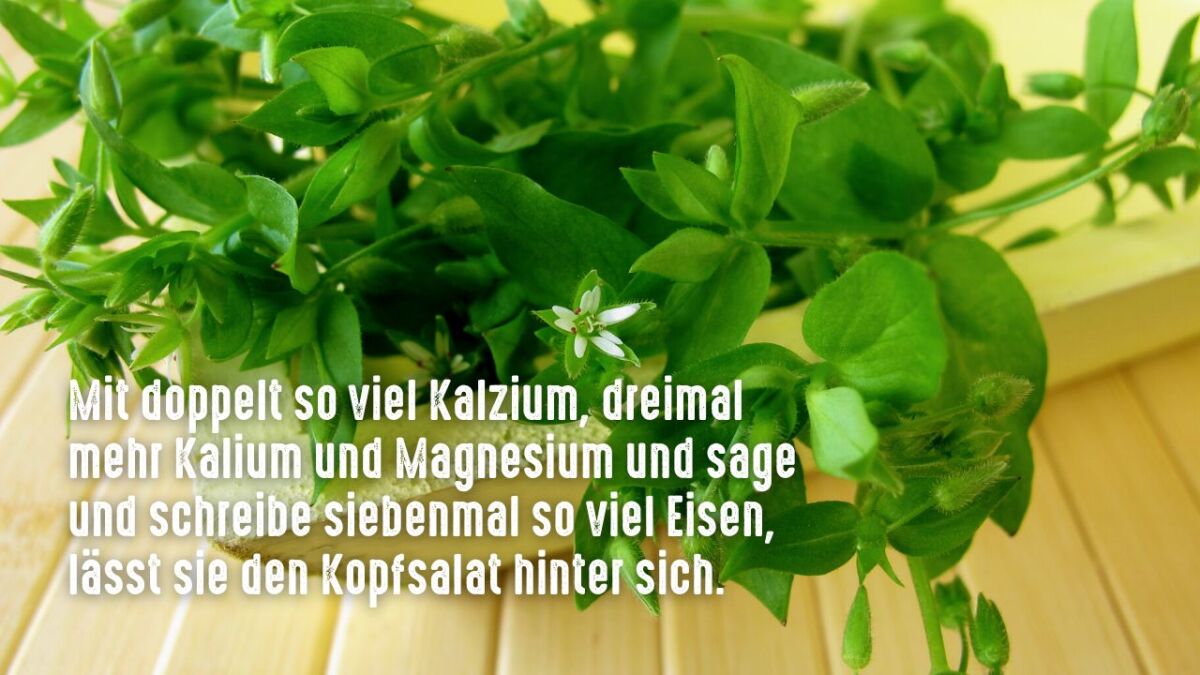
Another advantage of the "Weed" is its harvest time. It grows into the winter months and can practically be collected year-round, while the period for lettuce is limited to the months of May through September.
As an "Archaeophyte," meaning it's a very old plant that existed as far back as the Stone Age, chickweed has been with humans for a long time. Nowadays, it's recognized as a food source due to its nutritional value.
The multifunctional system of chickweed
Chickweed has developed a sophisticated system to determine its resting times and provide certain plant locations with water when needed.
On sunny days, the flowers open at 9:00 am, bloom until evening, and close overnight. If it rains or is cloudy, the buds remain closed all day. By simulating this rest state, the plant recovers from strain, such as from too hot days.

As soon as the flowers close in the evening, the leaves also switch to sleep mode. This is called sleep mode.
With the fine hairline that runs over the top of the up to 40 centimeters long stems, the chickweed can transport additional water. This way, individual pairs of leaves are specifically supplied and the rest of the dew moves on.
At this point, I would like to note that attentive observations in the plant kingdom could also lead us to the solution to some problems.
Chickweed as a mental and practical teacher. Perhaps much-needed rest periods for our bodies will be named after a plant that has been practicing this for thousands of years.
There is an ancient power in chickweed
As I mentioned before, chickweed has been known as a useful plant since ancient times.
But its healing power was also recognized and used a long time ago.
Due to its valuable ingredients, chickweed can be found in legends and stories from ancient times. People gathered the vitamin-rich herb after winter to make up for their deficiencies during the harsh winter months.
In rural kitchens, it was used to color food and added to various dishes.
One legend, which is not 100% confirmed but is based on a presumption, is that the Greek military doctor Dioscorides in the 1st century recommended a plant he called Alsine or mouse ear for the relief of eye inflammations and earaches.
It is believed that the plant he mentioned in his work "Materia Medica" was indeed chickweed. Unfortunately, descriptions were often inaccurate and were passed on for a long time without being filtered.
Therefore, it cannot be said with certainty that the aforementioned Alsine actually referred to chickweed.
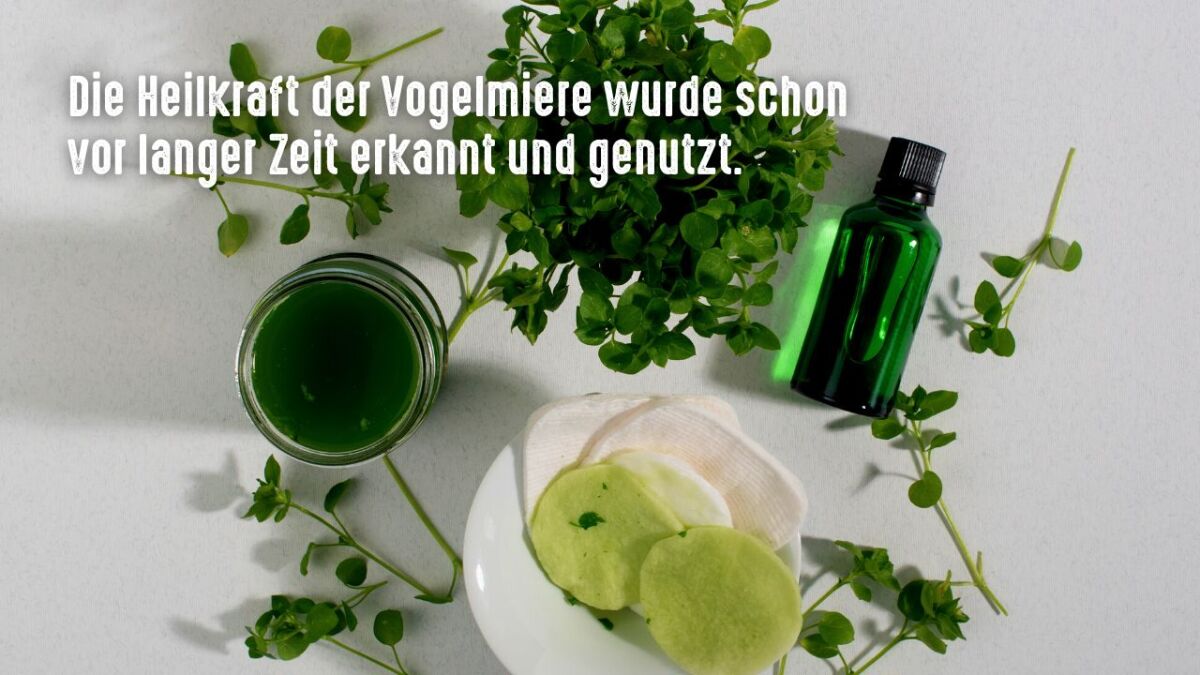
However, it is a fact that the healing power of the plant was highly valued in monasteries. Poultices made with chickweed were applied to injuries, abrasions, and even sword wounds.
In addition, the plant was also used as a fever-reducing agent for children. The renowned Hildegard von Bingen referred to the plant as "Hundsdarm" (dog intestine). In other descriptions, it is called "chicken intestine". This can easily be attributed to the fact that the inside of the stems is flexible and supple like an intestine and can be pulled out.
Even in modern medicine, chickweed is not unknown. The herb and stems are mainly used in forms such as tablets or teas.
The field of application for the bird's-eye chickweed is very diverse. It is used as a remedy for colds, upper respiratory tract diseases, bloating, bruises, boils, as well as for kidney inflammation and skin irritation, among other ailments.
Delicacies made from bird's-eye chickweed
What takes a long time, becomes good, and so bird's-eye chickweed has also made its way into modern cuisine.
Delicious soups, whether cold or warm, salads, quiches, even savory cakes and casseroles can be prepared with it. Small vitamin bombs can be processed everywhere in smoothies, with other herbs, in quark or as a green sauce.
People share their creations on online portals, some of which are based on old recipes or have been created on their own.
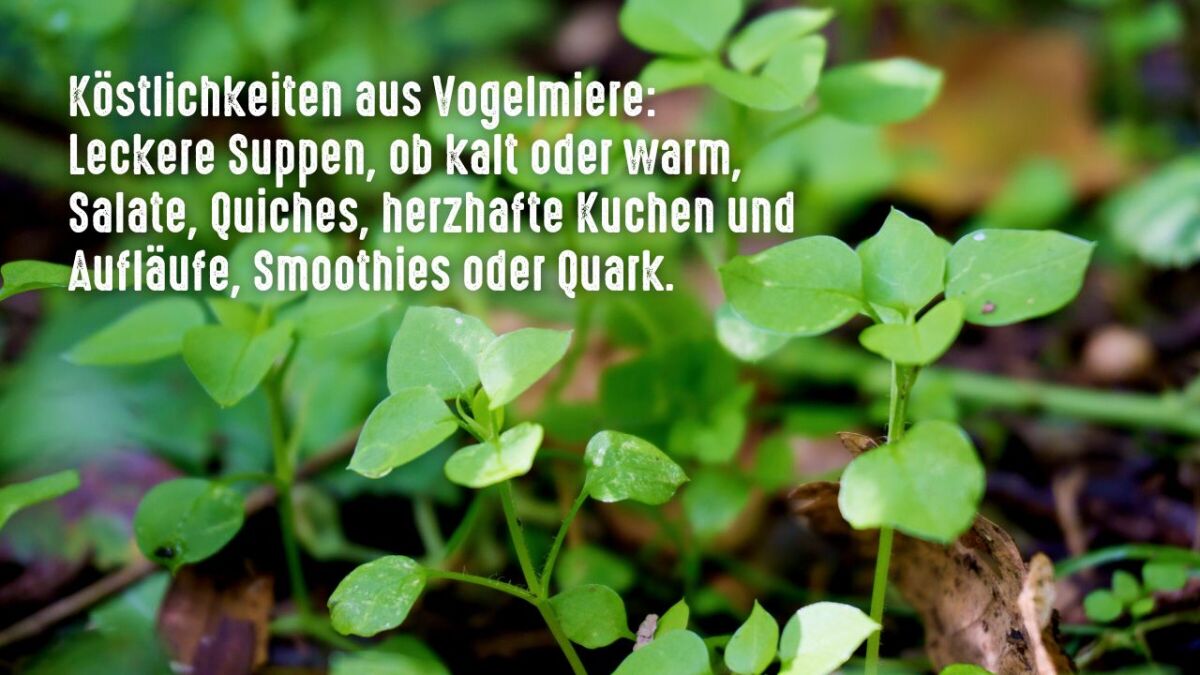
One of them I particularly like. Because it is quick and easy to prepare, I also want to share it with you.
Recipe: Bird's-eye Chickweed Soup
You'll need:
- 200 grams of bird's-eye chickweed
- one medium onion
- 100 grams of floury potatoes
- 500 milliliters of vegetable broth
- 2 tablespoons of olive oil
- salt, pepper, and nutmeg
- some cream
And here are the preparation steps:
- Finely chop the washed and dried bird's-eye chickweed on a kitchen towel
- Peel and dice the onion and potatoes, and heat the olive oil.
- In the hot oil, sweat the potatoes and onions and pour in the vegetable broth.
- Let everything simmer until the potatoes are soft.
- Add the chickweed and cook it together with the other two ingredients for another 5 minutes.
- Then remove everything from the heat and purée the soup with a hand blender.
- Then add cream
- Season with salt, pepper, and nutmeg.
Wishing you success and enjoy your meal.
Recipe: Chickweed Pesto
Ingredients for Chickweed Pesto
- 300 grams of fresh chickweed
- 2 cloves of garlic
- 100 ml of olive oil
- 1 pinch of salt
- a few roasted black walnuts, sunflower seeds, English walnuts or pecans
- some lemon zest (make sure it is organic as you will be using the skin)
Preparation:
- Harvest the chickweed with a knife to avoid dirt; rinse and toss to dry.
- First, pour half of the olive oil into the blender, then add the garlic, then the salt and finally the chickweed.
Ideally, eat fresh, store at room temperature for up to a week, or freeze for up to 4 months. Freeze in ice cube trays to thaw exactly the right amount of pesto.
Also read
9 Recipes with Wild Herbs for Camping and Outdoor – These 9 delicious recipes with wild herbs bring the taste of the forest to your next camping trip. From crispy bread to aromatic soup.
Various uses of chickweed
You can also easily process chickweed in other contexts. A salve made from chickweed or a tincture can enhance your home pharmacy or make for a great gift.
Due to its silica and calcium content, chickweed is often used for the skin, hair, and nails. Both components strengthen the structure and also promote growth.
A rinse with chickweed or a salve can be easily made and is highly effective.

The plant also strengthens the immune system through its vitamin C and B complex, making it less susceptible to external influences.
The salve also has a cooling function, making it excellent for mosquito bites, skin redness, irritation such as sunburn, as well as minor skin injuries such as cuts or abrasions.
The plant can also be used as a first aid during hikes in the woods or a survival training.
Injuries happen quickly, and it is good to know what you can find and how to use it.
You just need to crush or chew the plant, which by the way, tastes like young corn, and apply it to the affected area.
The same applies if you twist or sprain your ankle. In such cases, it is always advisable to have a clean cloth with you, with which you can quickly and easily make an effective wrap using chickweed.
Filled to the brim with important ingredients
In addition to the previously mentioned beneficial components of chickweed, there are several other no less important substances added to the mix.
Chickweed, for example, also contains vitamin A, vitamin K, and folic acid, in addition to vitamins C and B.
Significant minerals and trace elements are also present, such as iron, manganese, zinc, copper, calcium, and magnesium.
The final components are plant substances such as chlorophyll, saponins, antioxidants, and silica. Since silica found in plants is organic, it is easily absorbed by the body and well processed.
Because of its many advantages, chickweed is also recommended for diets.
The micronutrient content of the plant is by far higher than in all cultivated salad varieties.

Moreover, chickweed has no side effects. The consumption should be avoided in excess due to the presence of tannins (saponins) in the plant, which can irritate the stomach lining.
However, poisoning or overdoses have not been reported so far.
Confusions with other plants
Like many other plants, chickweed has some herb siblings with which it can be confused.
The field speedwell, for example, bears a striking resemblance to the chickweed at first glance. Especially when found outside its flowering season.
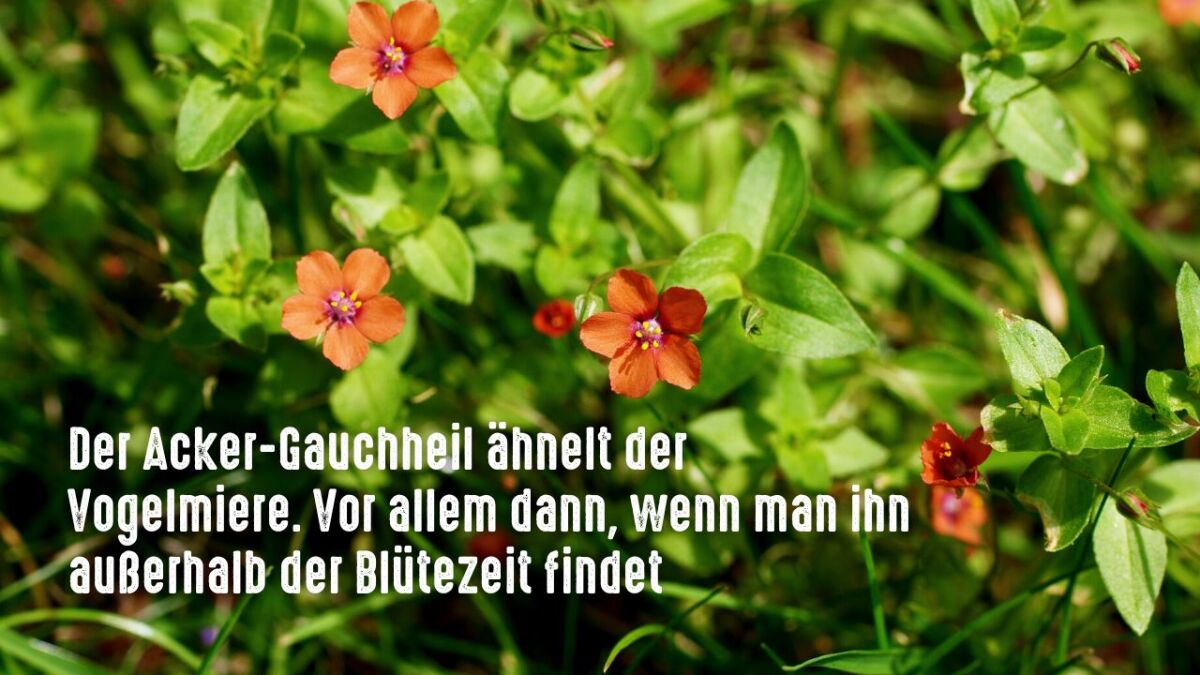
Unlike the snow-white to slightly violet-shimmering flowers of the chickweed, the field speedwell has orange to reddish flowers. And red should be a warning signal in this case.
The field speedwell is considered slightly toxic because the plant has an extremely high saponin content. That means that accidental consumption might not kill you, but you may have significant digestive problems. So, stay away.
Another distinguishing feature is the hairline of chickweed. Field forget-me-nots do not have it. When in doubt, hold it up against the light. Even an amateur eye will see the hairline. If it is not there, better to leave the plant alone.
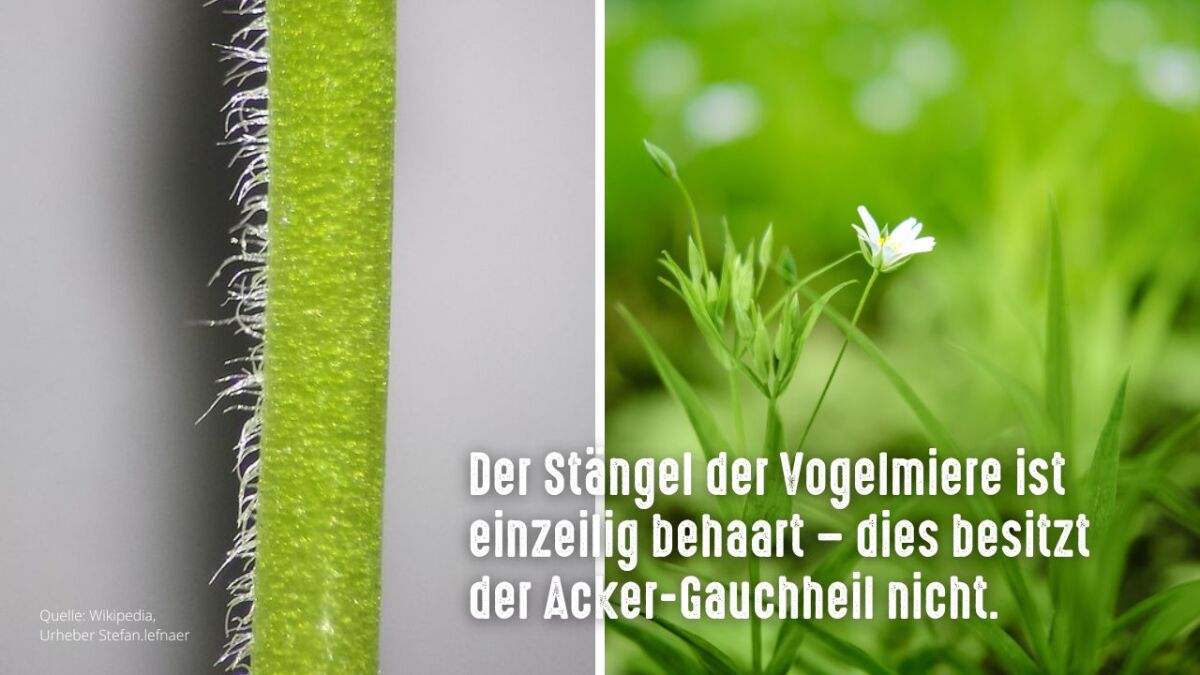
Another confusion could arise between the water knot grass and the star chickweed. However, both are edible and therefore safe. Other species of chickweed are also considered harmless.
Fantastic Silver Stars
There are legends and stories about many plants, and chickweed is no exception.
Once upon a time, a handsome young but poor musician asked for the hand of a rich innkeeper's beautiful daughter. However, the girl's father rejected the musician as a son-in-law.
The musician, however, did not give up so easily, and the innkeeper's daughter was also in love with him. So, the innkeeper agreed to let them marry, but only under one condition. The musician had to provide a wedding dress that sparkled like a thousand silver stars. Of course, he thought the poor musician would never be able to fulfill this condition.
The musician thought hard about how he could accomplish this and desperately sought help in a monastery. There, he was given a place to sleep for the night and met a nun in the monastery garden.
The nun lamented to the musician about her troubles. She was looking for a herb she had heard about that could cure all sorts of ailments. After the description, the musician recognized that it must be chickweed.
He showed the nun the plant, and she, in turn, gave him a branch of it as a lucky charm. The musician was glad he could help, but still had no solution to his problem.
As he wandered through the land, he also came across a little forest. Exhausted from deep thought, he lay down on the soft moss and fell asleep.
When he felt someone gently stroke his hair, he awoke and saw a fairy standing before him.
The minstrel told her his story, and the fairy replied, "the little branch that you carry with you is dedicated to me. If you play a song for me, I will help you."
The minstrel fulfilled her wish and played a beautiful melody. Meanwhile, the fairy began weaving a dress out of chickweed and, when she finished, presented it to the young man. He was amazed, for he held a bridal gown in his hands that sparkled like a thousand silver stars.
He thanked the fairy and set off towards his beloved. When the innkeeper saw that the minstrel had fulfilled the condition, he could not break his promise and the two were able to marry.
A beautiful story, isn't it?
In the video, I am out and about showing you the 6 wild herbs, including chickweed.
Conclusion: Our Native Plant World Has So Much to Offer
Chickweed is a widespread, wild edible plant that is full of vitamins and minerals. It grows in shady, moist habitats.
What does a hardcore macho, worm-eater, outdoor, mushroom, and survival instructor eat for breakfast? Chickweed, of course!
Stellar media - the common chickweed - with its juicy, tender, slightly sweet leaves and stems. For a quick snack during spring, chickweed is an excellent choice of wild edible plant - or as emergency food in the summer or as emergency rations in the winter.
There is so much amazing, old, and important information to discover about a plant like chickweed that I cannot emphasize enough.
I hope that with this text, I was able to bring you closer to this little plant and awaken your mindfulness.


Author of the guide
Martin Gebhardt
Hey, I'm Martin. On my blog, you will learn the basics and numerous details about living in the wild. I think survival, bushcraft and the good life in nature are the keys to happiness. Find me here on Instagram or on YouTube. You can find more about my mission on the About Me page.
Was this guide helpful?
25 people found this guide helpful.
5.00 out of 5 points (25 Ratings)
Comments (0)
This post may contain affiliate links. So if you click on the links and make a purchase, I will receive a small commission at no additional cost to you. Click here, to learn more about it.


